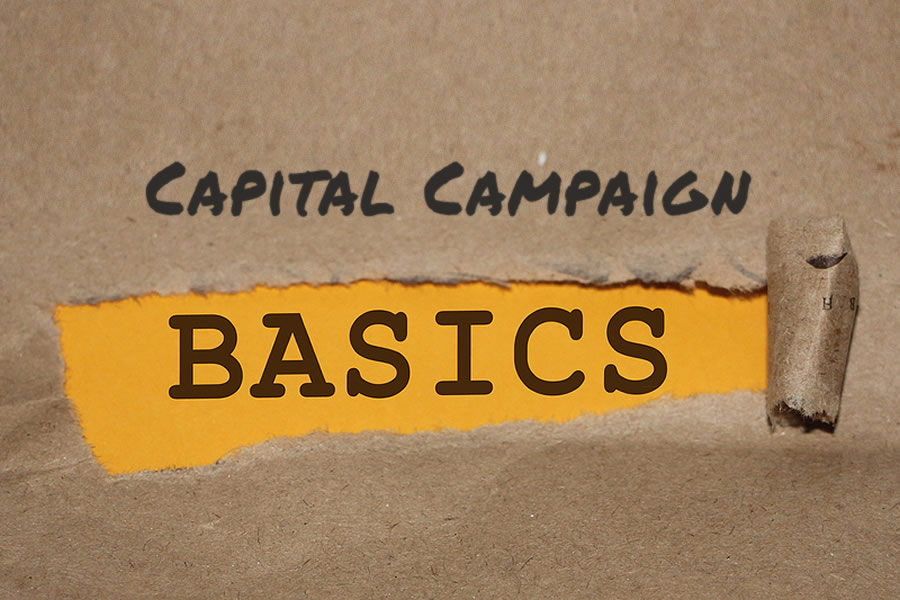
Leading a capital campaign can be overwhelming — even for the most experienced nonprofit CEO or Development Director.
After all, it’s not as if you sit around twiddling your thumbs on a regular basis. How can you possibly find the time for a capital campaign on top of your already-hectic schedule and massive responsibilities?
How Do You Know if You’re Ready for a Campaign?
A capital campaign is likely the biggest amount your organization has ever tried to raise. And since most nonprofits conduct capital campaigns once only every ten or even twenty years, it’s unlikely that you have a lot of experience leading a campaign.
However, what you probably have in spades is the drive to bring your organization to the next level. So let’s do a quick check — ask yourself these four questions:
- Has your organization outgrown your current facilities, or is it time to expand?
- Do you have a big vision and/or a plan to serve more people?
- Could there be a more effective way to achieve your mission?
- On a personal note, are you eager to leave a legacy before retiring or moving on?
If any of the above rings true, a capital campaign is likely on the horizon for your nonprofit — but you’re probably not sure where to begin. No worries, I’ve got you covered! (And here’s a great free tool to help you determine just how ready you are for a campaign.)
7 Capital Campaign Basics for Every Nonprofit Leader
Like any topic that feels big and overwhelming, it’s best to start with the basics. So with that in mind, here are seven capital campaign basics to guide your initial steps.
1. Workshop your vision.
You have a vision for your organization. Now, it’s time to share it with key staff and board members.
Brainstorm ideas and possibilities. Talk about a blue-sky vision for your organization. Think outside the box and beyond what you’ve thought possible.
2. List campaign objectives.
Once you agree on a vision, it’s time to get concrete. What will it take to achieve your vision?
- A new building?
- More staff?
- State-of-the-art equipment?
- Research?
- Technology?
The more specific you can be, the better — but don’t be ensnared by perfection. Things will evolve as your planning progresses. For now, simply get some basic objectives down on paper.
3. Determine approximate costs.
Come up with a ballpark number for your vision. Consider:
- How much is real estate in your area?
- How much does new construction cost per square foot in your region?
- How many FTE’s will you need?
Include three years of new program start-up costs. Include building maintenance funds, technology, and endowment. Add 10% for construction overages. And add another 10% for fundraising expenses.
This will be your initial working goal.
4. Hire help.
Assume that you will hire some sort of help for various aspects of your campaign.
Help comes in many forms. You may need to hire internally (staff) as well as externally (consulting). If you are attempting to raise significantly more than you typically raise, it will take more hands and heads to achieve success.
Not sure what type of help you need or should consider? The Capital Campaign Toolkit can help — sign up for a free strategy session to discuss your campaign with a veteran campaign advisor. (There’s no obligation — seriously!)
5. Draft a case for support.
This simple document should communicate why donors should give to your campaign.
Your case for support should tell a story and paint a picture of what the world, your clients, and the community will look like after your campaign. It should answer the two-pronged question: why us, why now?
It should NOT be a fancy, formally-designed brochure, but a simple Word document.
6. Determine the fundraising feasibility.
Once you’ve completed these first five basic steps, it’s time to test the feasibility of your case and your working goal. You can do this in a variety of ways.
The most common way to test the feasibility of your campaign is to hire a consultant to interview your donors and provide recommendations to your board. On the other end of the spectrum, you can DIY these pre-campaign donor conversations. At the Capital Campaign Toolkit, we recommend a hybrid version we call a Guided Feasibility Study. This hybrid model offers a number of key advantages.
7. Speak to your biggest potential donors.
Regardless of the feasibility study method you choose, you want to speak to your biggest potential donors prior to asking them for a gift for your campaign.
Your feasibility study provides a unique opportunity to engage donors and build relationships with them prior to asking for a gift. Do not rush through this important phase of your campaign planning — it’s actually an important part of the process of raising the biggest gifts. It’s allows donors to consider your project, how they will help, and their role in the campaign before they are asked for a gift.
I know it can be tempting to “get started” and simply rush to ask for gifts, but this process is actually teeing up those big gifts. Don’t let eager board members convince you to skip it.
The Next Leap in Your Growth
Post-COVID (aka, this summer) is a perfect time to be thinking about the next phase for your organization. You survived the pandemic, literally and figuratively. Now, it’s time to consider the next leap in your development and growth.
If there’s a campaign in your future, reach out to me and my team at the Capital Campaign Toolkit. We’ve got tons of free resources, as well as our subscription membership support for nonprofit leaders.

Thanks a lot Amy Eisenstein for e -mailing me The capical Campaign toolkit. I have read through the seven Capital campaign basics .A lot is learnt and they indeed guides well anon profit leader when seeking for fundraising .